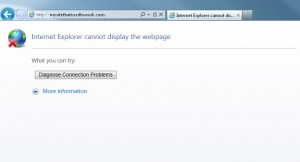by Karun Subramanian
on July 16, 2014
So, when was the last time you monitored the CPU utilized by your Java application ? Perhaps ‘never’ ?. It is actually important to keep an eye on the CPU utilzied by your application. Your Application runs on a host (or hosts) that has one or more CPUs managed by the Operating System. The CPU resource is not unlimited (even though some developers and Administrators wish that were true).
Let’s dive into the 4 things you need to know about the CPU Utilization of your Java application.
1. Why do you care ?
Read More
by Karun Subramanian
on June 17, 2014
Java heap related issues can cause severe damage to your application that will directly result in poor end user experience. Care must be taken to tune the Heap related parameters that suit your application. Out of the box default parameters are not enough.
Quick overview:
Java Heap is the memory used by your application to create and store objects. You define the maximum memory that can be for the Heap by specifying ‘-Xmx<size>’ java command line option (Example: ‘-Xmx1024m‘, where m stands for Mega bytes). As your application runs, it will gradually fill up Heap. JVM periodically runs a process called ‘Garbage collection’ (GC) which will scan the heap and clear objects that are no longer referenced by your application.One cannot request Garbage Collection on demand. Only JVM can decide when to run GC.
Let me walk you through four of the most common Java Heap related issues and how to fix them.
Read More
by Karun Subramanian
on June 10, 2014
When the user cannot access your web application and instead sees a generic (and ugly) ‘Page cannot be displayed’, the root cause could range from simple typo in the URL to having exhausted the Thread Pool in the Application Web Container. The key to resolving this type of problem is asking the right questions well in the beginning of troubleshooting.

Pull up your sleeves, here are the top 8 reasons for this problem.
Read More
by Karun Subramanian
on June 6, 2014
Let’s face it. No matter how much tuning one can do at various sub systems (Application Server, Web Server, Operating System, Database), when the code is bad, you are screwed. Poor coding can cost a company a lot, and in some cases can cost the company itself.
Before diving into the 9 blunders made by the development team, let me tell you that I have been a software engineer and I have personally made lot of these mistakes myself. It requires great deal of discipline to be vigilant about writing quality code. There is no other choice.
Without further due, here are the 9 blunders by the Development team that will make Production Support’s life miserable. Don’t make anyone’s life miserable.
Read More
by Karun Subramanian
on June 1, 2014
Are you on top of monitoring one of the most important metrics in your Java application ? I’m talking about Java Heap usage. If you think you don’t have to monitor the heap usage, think again.
“OutOfMemory” error is one of the deadliest and not keeping track of your heap usage means you are walking on a land mine – It can blow up all of a sudden.
Now that you know the importance of monitoring the Heap usage, how do you proceed ?
First of all, I would like to clarify one important thing.
Read More
